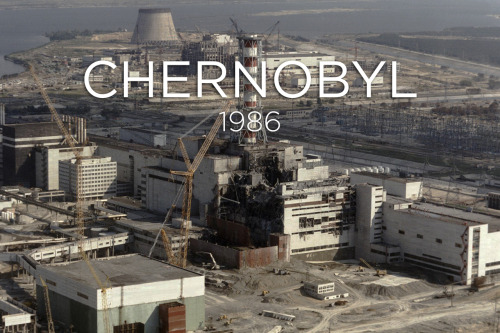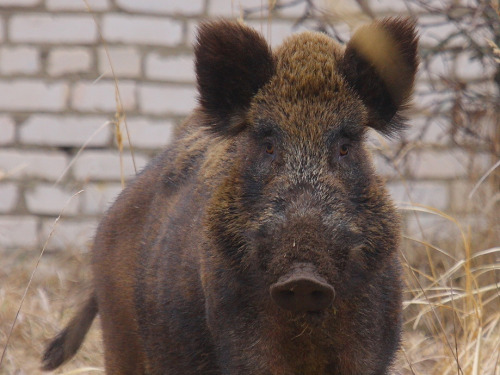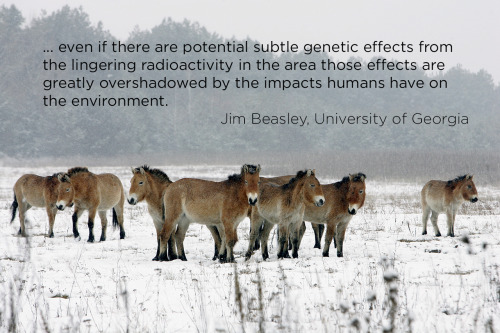Silica Nanoparticles Could Be Used To Repair Damaged Teeth
Silica nanoparticles could be used to repair damaged teeth

Researchers at the University of Birmingham have shown how the development of coated silica nanoparticles could be used in restorative treatment of sensitive teeth and preventing the onset of tooth decay.
The study, published in the Journal of Dentistry, shows how sub-micron silica particles can be prepared to deliver important compounds into damaged teeth through tubules in the dentine.
The tiny particles can be bound to compounds ranging from calcium tooth building materials to antimicrobials that prevent infection.
Professor Damien Walmsley, from the School of Dentistry at the University of Birmingham, explained, “The dentine of our teeth have numerous microscopic holes, which are the entrances to tubules that run through to the nerve. When your outer enamel is breached, the exposure of these tubules is really noticeable. If you drink something cold, you can feel the sensitivity in your teeth because these tubules run directly through to the nerve and the soft tissue of the tooth.”
“Our plan was to use target those same tubules with a multifunctional agent that can help repair and restore the tooth, while protecting it against further infection that could penetrate the pulp and cause irreversible damage.”
The aim of restorative agents is to increase the mineral content of both the enamel and dentine, with the particles acting like seeds for further growth that would close the tubules.
Previous attempts have used compounds of calcium fluoride, combinations of carbonate-hydroxypatite nanocrystals and bioactive glass, but all have seen limited success as they are liable to aggregate on delivery to the tubules. This prevents them from being able to enter the opening which is only 1 to 4 microns in width.
However, the Birmingham team turned to sub-micron silica particles that had been prepared with a surface coating to reduce the chance of aggregation.
When observed using high definition SEM (Scanning Electron Microsopy), the researchers saw promising signs that suggested that the aggregation obstacle had been overcome.
Professor Zoe Pikramenou, from the School of Chemistry at the University of Birmingham, said, “These silica particles are available in a range of sizes, from nanometre to sub-micron, without altering their porous nature. It is this that makes them an ideal container for calcium based compounds to restore the teeth, and antibacterial compounds to protect them. All we needed to do was find the right way of coating them to get them to their target. We have found that different coatings does change the way that they interact with the tooth surface.”
“We tested a number of different options to see which would allow for the highest level particle penetration into the tubules, and identified a hydrophobic surface coating that provides real hope for the development of an effective agent.”
Our next steps are to optimise the coatings and then see how effective the particles are blocking the communication with the inside of the tooth. The ultimate aim is to provide relief from the pain of sensitivity.
University of Birmingham
Nanotechnology World Association
More Posts from Dotmpotter and Others
(cross-posted on the MIT Center for Civic Media blog)
A few years ago when I was working on the Civic Commons project with Code for America and OpenPlans, I did a presentation at Living Cities called “Cities that Work Like the Web” which discussed using open standards and…

The Crown Estate has launched a unique interactive map that shows the estimated percentage of UK electricity demand being met by offshore wind on an hourly basis. For the first time, the map draws together a range of publically available data to demonstrate the contribution offshore wind is making to the UK’s low carbon energy mix. The UK now has 27 operational wind farms, with nearly 1500 turbines grown from the first two offshore demonstration turbines deployed in 2000. Although there is variation in output on a daily basis, over the course of 2015 offshore wind is expected to meet an average of around 5% per cent of UK electricity demand.
(via Crown Estate launches interactive offshore wind electricity map - Blue and Green Tomorrow)








On April 26, 1986, a power surge caused an explosion at the Chernobyl Nuclear Power Plant near Pripyat, Ukraine. A large quantity of radioactive material was released.
On May 2, 1986, the Soviet government established a “Zone of Alienation” or “Exclusion Zone” around Chernobyl – a thousand square miles of “radioactive wasteland.” All humans were evacuated. The town of Pripyat was completely abandoned.
But the animals didn’t leave. And a new study, published this month in Current Biology, suggests they are doing fine. “None of our three hypotheses postulating radiation damage to large mammal populations at Chernobyl were supported by the empirical evidence,” says Jim Beasley, one of the researchers.
In fact, some of the populations have grown. These photos (mostly taken by Valeriy Yurko) come from the Belarusian side of the Exclusion Zone, and area called the Polessye State Radioecological Reserve. Kingfisher, elk, boar, baby spotted eagles, wild ponies, moose, rabbits, and wolves all make their home in the park. In some ways, human presence is worse for wildlife than a nuclear disaster.
Image credits:
1986 Chernobyl - ZUFAROV/AFP/Getty Images
Wildlife photos - Valeriy Yurko/Polessye State Radioecological Reserve
Ponies in winter - SERGEI SUPINSKY/AFP/Getty Images










Brand: Christie Brown
Designer: Aisha Obuobi
Coupe de Classe Winter 2015 Collection
Tumblr: cutfromadiffcloth.tumblr.com | Twitter: @IAM_CFDC | Instagram: @IAMCFDC | Facebook: CUT FROM A DIFFERENT CLOTH | Website: www.cutfromadiffcloth.com



Earthprints: Aletsch Glacier
One of Europe’s biggest glaciers, the Great Aletsch, coils 14 miles through the Swiss Alps - and yet this mighty river of ice could almost vanish in the lifetimes of people born today because of climate change. The glacier, 900 meters (2,950 feet) thick at one point, has retreated about 3 km (1.9 miles) since 1870 and that pace is quickening, as with many other glaciers around the globe.
That is feeding more water into the oceans and raising world sea levels. It was only after I got down onto the ice, with spikes on my boots for grip and often roped to my guide for safety, that I appreciated the full scale of the glacier, on the south side of the Jungfraujoch railway station.
And yet even the Great Aletsch glacier, the biggest in the Alps and visible from space, is under threat from the build-up of greenhouse gases in the atmosphere from factories, power plants and cars that are blamed for global warming. (REUTERS) Photography by Denis Balibouse/REUTERS Read: Vast Alpine glacier could almost vanish by 2100 due to warming See more photos of the Great Aletsch and our other slideshows on Yahoo News.





For more on the Fermi Paradox and why alien life hasn’t found us yet. (Infographic via futurism)

Mapping the World’s Air Pollution in Real Time
[Image: Air Quality Index China]










Bill Nye Explains The Connection Between Climate Change And Terrorism In Paris
President Obama made headlines Monday when he said during his remarks at COP21 that the climate change conference taking place in Paris is an “act of defiance” against terrorists who attacked the city earlier this month. Later on the same day, Bill Nye took that link a step further, explaining to HuffPost Live that the brutality in Paris was “a result of climate change.”
“This is just the start of things.”

Iceland to Help Develop Geothermal Energy in Ethiopia
-
 demonputty reblogged this · 8 years ago
demonputty reblogged this · 8 years ago -
 bellababy12-blog1 reblogged this · 8 years ago
bellababy12-blog1 reblogged this · 8 years ago -
 bellababy12-blog1 liked this · 8 years ago
bellababy12-blog1 liked this · 8 years ago -
 theskyrabbit liked this · 8 years ago
theskyrabbit liked this · 8 years ago -
 awesomenada00-blog liked this · 9 years ago
awesomenada00-blog liked this · 9 years ago -
 willem2de liked this · 9 years ago
willem2de liked this · 9 years ago -
 nanobay24 liked this · 9 years ago
nanobay24 liked this · 9 years ago -
 ttplayer2045-blog liked this · 9 years ago
ttplayer2045-blog liked this · 9 years ago -
 loserofthecentury reblogged this · 9 years ago
loserofthecentury reblogged this · 9 years ago -
 thehumanwearingturtlenecks liked this · 9 years ago
thehumanwearingturtlenecks liked this · 9 years ago -
 introvertsavenue liked this · 9 years ago
introvertsavenue liked this · 9 years ago -
 rezwan916usa reblogged this · 9 years ago
rezwan916usa reblogged this · 9 years ago -
 poxienova reblogged this · 9 years ago
poxienova reblogged this · 9 years ago -
 ckl116 reblogged this · 9 years ago
ckl116 reblogged this · 9 years ago -
 the-nomadic-writer reblogged this · 9 years ago
the-nomadic-writer reblogged this · 9 years ago -
 torydactyl liked this · 9 years ago
torydactyl liked this · 9 years ago -
 secretagentpeptidebond reblogged this · 9 years ago
secretagentpeptidebond reblogged this · 9 years ago -
 mar-umi reblogged this · 9 years ago
mar-umi reblogged this · 9 years ago -
 thoughtsofmymadelife reblogged this · 9 years ago
thoughtsofmymadelife reblogged this · 9 years ago -
 flyingmonkeynumber9 reblogged this · 9 years ago
flyingmonkeynumber9 reblogged this · 9 years ago -
 zahrahnadiaputri reblogged this · 9 years ago
zahrahnadiaputri reblogged this · 9 years ago -
 tomatojitsu-blog liked this · 9 years ago
tomatojitsu-blog liked this · 9 years ago -
 coronalthoughtejection reblogged this · 9 years ago
coronalthoughtejection reblogged this · 9 years ago -
 coronalthoughtejection liked this · 9 years ago
coronalthoughtejection liked this · 9 years ago -
 lethal-parsnip liked this · 9 years ago
lethal-parsnip liked this · 9 years ago -
 epzi10n liked this · 9 years ago
epzi10n liked this · 9 years ago -
 hopefulkittykid liked this · 9 years ago
hopefulkittykid liked this · 9 years ago -
 hearteyesroseskies liked this · 9 years ago
hearteyesroseskies liked this · 9 years ago -
 vung liked this · 9 years ago
vung liked this · 9 years ago -
 ckl116 liked this · 9 years ago
ckl116 liked this · 9 years ago -
 harvardnerdyy21 reblogged this · 9 years ago
harvardnerdyy21 reblogged this · 9 years ago -
 ravenkasandra liked this · 9 years ago
ravenkasandra liked this · 9 years ago -
 troyminos reblogged this · 9 years ago
troyminos reblogged this · 9 years ago -
 oddnumbersonly reblogged this · 9 years ago
oddnumbersonly reblogged this · 9 years ago -
 floorbananamotherfucker liked this · 9 years ago
floorbananamotherfucker liked this · 9 years ago -
 moffbadger reblogged this · 9 years ago
moffbadger reblogged this · 9 years ago